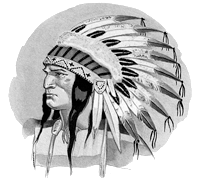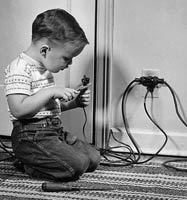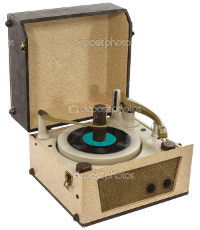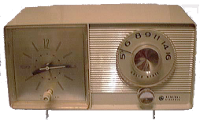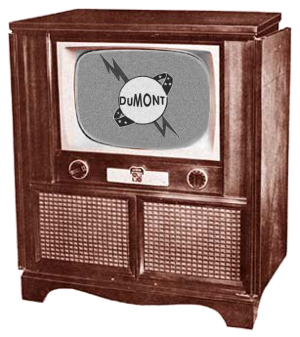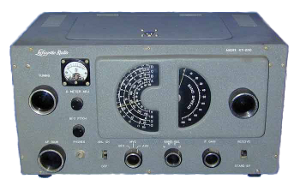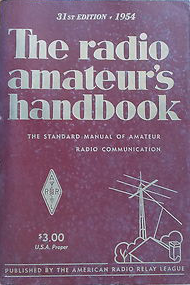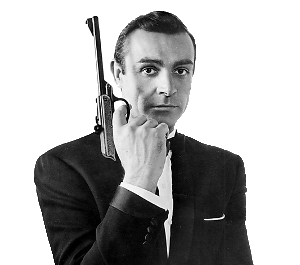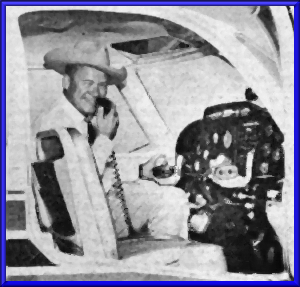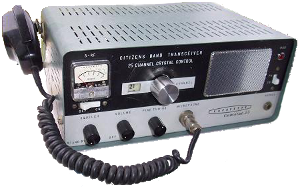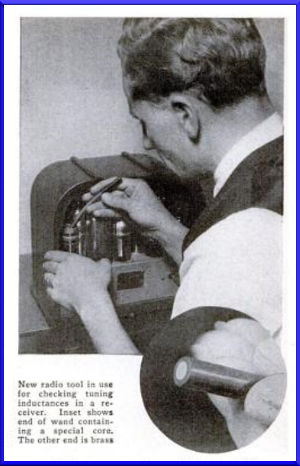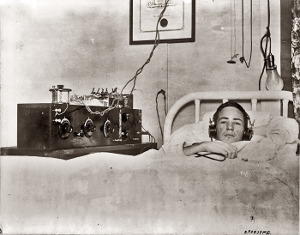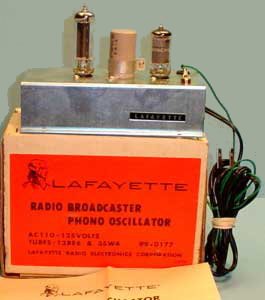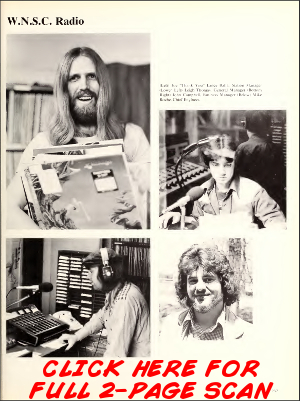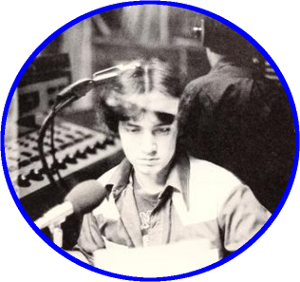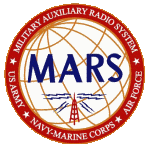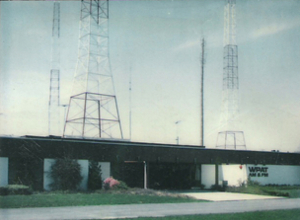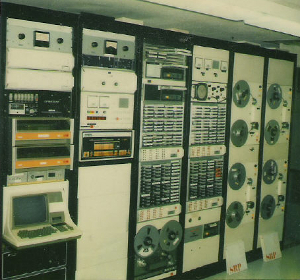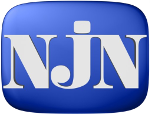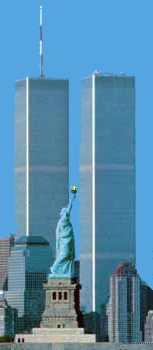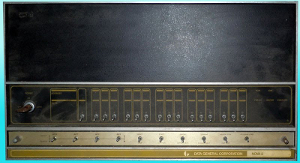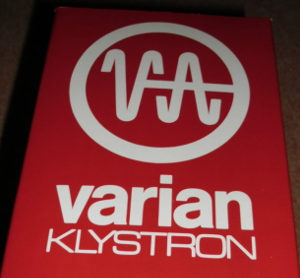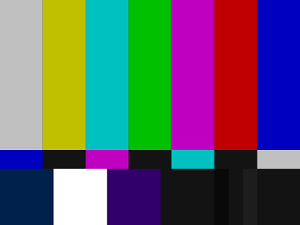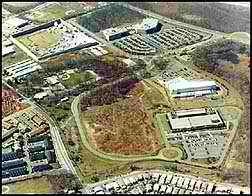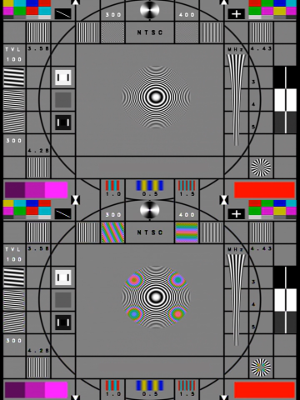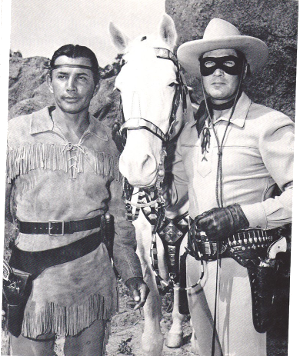Why the Indian Head Test Pattern?
-
My Earliest Memories
The Indian Head TV Test Pattern is one of my earliest memories growing up during the 1950's in Newark, NJ. Since I was old enough to change the channels on our old DuMont television set, I was fascinated with the world of electronics.
I would wake up early in the morning, climb out of my crib and make my way into the living room, just to turn on the TV to see the different test patterns transmitted across the dial. Perhaps the Indian Head was etched into my mind because my favorite show was The Lone Ranger . . . when that came on, I would run to my rocking horse, jump on and ride that thing as hard as I could, pounding the floor, and actually make it hop across the room.
I was forever seduced by those test patterns when I noticed one morning that they would mysteriously change in brightness and clarity, kind of like the Outer Limits intro. Why are these images morphing? Who was doing that? I wanted to do that . . . I wanted to be that guy.
-
And thennn . . .
Another device that helped peak my curiosity was my little record player, a square box with glass tubes inside that glowed. I would play a stack of 45's in the morning after the test patterns went away. Later in the day, I would take it out and put on the same stack of records, but different songs played. Why are the songs not the same as the ones in the morning (not realizing that the stack was flipped over)? Wondering if where it was plugged in had something to do with it, I tried plugging it in where the TV was plugged in. And so, my quest for knowledge of all things electric began . . .
-
The Magic Touch
Over the years, I took apart everything I could get my hands on. When the GE plastic clock-radio stopped working, I completely dismantled it. Having no idea what any of the parts were or what they did, I managed to put it back together and voila . . . it worked! It seems that I had the 'Magic Touch' or as some would say 'The Knack' (not realizing at the time that I was probably just clearing out all the dust and reseating the tubes - scraping clean the tarnished pins), but hey, little successes like that gave me the impetus to make electronics my life long passion. I was on my way to becomming that guy.
-
The Old DuMont & the TV Repair Man
One day, when I was about five years old, the old DuMont TV would not light up. My mother wouldn't let me take it apart like all the other little things because this was serious equipment, and it was furniture with doors that closed. I was warned that the voltage in there was way too high for a little kid to go poking around. My uncle Lou said 'you could get killed' . . . he was always telling me and cousin Bob things like: 'you'll burn the house down' or 'you'll shoot your eye out'. My father passed away when I was young, so my mother relied on uncle Lou for advice. Anyway, he couldn't get it working, so we had to call Brill & Vinci, the TV Repairmen. It cost my mother almost a week's pay to fix it and I remember her crying when the guy left. That's when I said to her 'Mommy, some day I'm going to fix the TV. From that day forward, I was obsessed with figuring out how these TV's and radios and record players worked.
-
WHOAA . . . Short Wave Radio !
At the age of four, my grandfather (Roche), recognizing that I had this interest and ability in electronics, took me to visit a relative in Harrison who had a Ham radio. I'd never heard the term before, so I laughed at the thought of a radio made from food. When I saw this HUGE radio in his kitchen (it took up almost the entire table), my eyes lit up and my jaw dropped. I had never seen (let alone get my hands on) something that looked like it belongs to Flash Gordon. With a wire out the window (pulled by the clothes line) this thing made so many strange and weird sounds, I thought we were picking up aliens from outer space. This distant relative was so happy he made my day, I could tell he felt good for sparking an intense interest in a little boy. What really made my head explode (and grow for years to come) was his gift to me of an ARRL Handbook!!! This was my bible for many years. Thank you Gramps for a new direction.
-
WHAAA? . . . A Short Wave Radio in a TV !
My other grandfather had a TV with a Short Wave radio built in. It wasn't new, he'd had it since before I was born, I was just never aware of it before. This was a beautiful piece of furniture (blond color wood). I thought this was the coolest thing, to have BOTH a radio AND a TV in the same cabinet. It's funny how people are able to see things, things that were always there, but now with the spark of recognition when you become aware. At this point, I'm feeling like I've got a lot of catching up to do. How could all these things have been invented without me? I became more determined than ever to get a handle on all this. Thank you Grandpa for allowing me to work with you fixing things around the house.
-
Space, Spies and Sci-Fi
As with most boys in the early 60's I thought it was really cool to be a Secret Agent. Maybe this was fueled by the plethora of spy movies and TV shows starting with James Bond. There was even a hit song on the radio by Johnny Rivers coupled with the TV show. Am I a product of my environment? Or is it a matter of art imitating life, perhaps it really began with Hitchcock in the 1930's.
The transition from cowboy to spy was easy . . . good guys fighting the good fight. Going from Roy Rogers, The Lone Ranger and The Rifleman to Sky King to The Saint, Man From UNCLE, I SPY and of course Secret Agent all seems perfectly natural. A big favorite was Sky King, he was a modern day cowboy with high-tech stuff. He flew an airplane and used a 2-way radio to save the day.
All during this transition, science fiction (for me, science awareness) rode a parallel course. There was no either/or between Sci-Fi and heroism. I was enthralled by The Twilight Zone, The Outer Limits and topped off by Star Trek. In fact, Star Trek was the next level of cowboy, extended to space, with even more high-tech stuff, and instead of an airplane they flew a space ship.
The common thread through all the mind molding for me was still electronics. During the 'Spy' years, I went from building Log Cabins to Erector Set contraptions to making a covert communications device. Having cut out the pages of a book (leaving the outer margin intact), I installed the circuit board from a cheap walkie-talkie inside. I guess I was a product of my environment.
-
Movin' On Up
We moved out of the apartment in Newark, when I was about ten, to Grandpa's house in Bloomfield. Now I had a roof on which I could install antennas, so I set my sights on that Ham radio stuff full speed ahead. Having usurped the front porch, filled with my HO cars & trains, and several Short Wave radios with a wire strung out the window and thrown across the roof, I was receiving stations from around the world.
I soon made friends with a kid across the street, Ric Mercuri, who's dad was a Ham. He and I both aspired to get our License, so we teamed up to study together. I wasn't concerned with passing the written portion of the test, that was a piece of cake for me, but we did struggle with the Morse Code for a couple years. I was able to memorize the dots and dashes on paper, but I just couldn't get the rhythm. It's kind of like music, you either have it or you don't. Sure I learned to play the accordian, a requirement for all Catholic school kids, and the piano, but I didn't feel it, it was purely mechanical.
-
Another Avenue
Feeling slighty discouraged, I thought I should explore other avenues of getting 'On the Air'. Many kids in the neighborhood had walkie-talkies which we used when playing army. So I decided to get a CB base station. After several weeks of looking through the Lafayette catalog, I chose the Comstat-25 rig with a Range Boost II antenna. Operating on that band was very professional back in the 60's, everyone was courteous and respectful.
Having a much greater range afforded by the whopping 5 Watts of RF power with a big antenna on the roof, I made new friends from miles away, not just around the block. Most notable was Rod Coppola (later: KA2KET) who became my lifelong friend. The stories of our exploits are too numerous to get into now, I'll save that for another time.
This was the time I discovered the thrill of tracking. There was this older guy 'Mr. D' who would tease us little kids over the air, not with malicious intent - all in good fun. For several weeks Rod and I tried to figure out where he was located. We knew he had to be closer to Rod, because Mr. D pinned his meter and caused adjacent channel splatter. I'd walk around the neighborhood with a walkie-talkie, waving the antenna around (I didn't have the means to build a directional loop yet).
Cousin Bob even joined our quest. It was during the winter when we were on another search mission - at the top of Hoffman Blvd. We knew he was in Bloomfield not East Orange because he talked about what school bus he took. In the midst of a snowball fight, I bent down to grab some more snow, when Bob froze with his arm outstretched pointing to the roof of a house. 'LOOK - THERE HE IS' shouted Bob. Sure enough, that was the antenna he claimed to have, we found him. We went to the side door and rang the doorbell. He invited us in, then showed us his radio and his really professional looking reel-to-reel tape deck (I remember he had Temptations songs on it - "I've got a love so deep, in the pit of my arm" he'd joke). Right after that he stopped teasing us, I remember feeling - now I was one of the guys.
I met a TV repair man over CB who showed me some tricks of the trade. He was the father of 'Krackles' - Donna Kudrak - from middle Bloomfield. She was called that because of the sound her Turner Plus-2 mic made as she tried to hold the button down (it was made of cheap plastic). He's the guy who showed me the 'Magic Wand' for tuning up TV's and radios. I brought my Comstat-25 over for him to test out (he had a real watt meter) and he went through a whole tune-up of my rig. This tool had a ferrite rod on one end and a brass rod on the other. By inserting each end into a coil while watching the response, it could be quickly determined if it needed to be tuned for lower or higher inductance. If that stage went down by the same amount with both ends, then no tuning was necessary - pretty cool.
I had a lot of fun with CB, enough to tide me over to a point in time when I would learn the code better. But I didn't let this distraction keep me from my goal of getting my Ham radio License. I resigned myself to the the notion that this was a 'stepping stone' to the future and I could learn from it. I still had my trusty ARRL Handbook and I continued to listen to those magical emmissions through the atmos.
-
The Neighborhood TV Repairman
By the time I was almost finished with eighth grade, I had become the resident expert in electronics. It was actually very easy fixing TV's and radios back then. Armed with a soldering gun, my own tube tester, and a Simpson 260 meter, oh yeah, I also built a Heathkit oscilliscope, I could fix almost anything. All the kids (and some adults) would always ring my bell to fix a walkie-talkie, or change the crystals for other channels, or supe up a rig for more power. Then there was Anthony Fanelli's father, who would find old TV's being thrown out in the garbage and bring them to me. I would get them going, he'd sell them and we split the profit.
One funny story about CB is worth mentioning. Besides learning to be careful what you say over the air because of TVI (coming through TV sets is not good), one must be aware of who might overhear the intended recipient of your communication. I stayed home sick one day and a classmate brought a walkie-talkie to school. We wanted to test the range - it was almost a half mile away as the crow flies. Upon his arrival at St. Francis Xavier, I found myself getting scolded by one of the Nuns - over the airwaves! In her mind, I shouldn't be talking on the radio if I was supposed to be sick. I told her that the radio was next to my bed and that was the end of it.
Additionally, that was the year the Diocese began the 8th Grade Science Fair. I brought in a stereo that I built - all tubes. Even though it was a kit (Merrill), I believed that it was worth demonstrating as a testament of my understanding of electronics and skill at building. This thing was BEAUTIFUL, however the Nuns didn't believe that I built it, so my entry was disqualified. Fine by me, I knew I built it.
I continued fixing TV's and radios in the neighborhood and studying my ARRL Handbook.
-
High School
Only two guys from the St. Francis Xavier graduating class of 1969 did NOT go to Essex Catholic High School . . . me and another CB buddy, Joe Laudati. I just realized as I'm writing this how weird that was, I had never thought about it before, but all of the guys who were NOT on CB went to the same local High School and the guys who WERE on CB went to far away schools!? Joe and I went in opposite directions though, he attended St. Peter's Prep in Jersey City and I went to Seton Hall Prep in South Orange. The commute was brutal, it was a half mile walk uphill, two buses, then another half mile walk to the Seton Hall University campus.
One benefit was I got to see a real radio station, WSOU 89.5 FM, located in the gym. My presence was frowned upon since I was a 'Preppy' and NOT a college student yet. They gave me the nickel tour, and it was impressed upon me that the only people allowed to work there must have an FCC License. Correctamundo - another reminder of the road I need to take. So that was my next stepping stone, getting my FCC Radiotelephone License. Not Third Class to be a DJ, not Second Class just to work under some else, but First Class. The pursuit of my Ham License was moved to the back burner.
During my Freshman year, I got a job at Lafayette Radio Electronics in Newark. I had to get special working papers since I was only fourteen years old. The best part was that I got an employee discount. On Wednesdays and Fridays I would take one bus after school from South Orange straight down into Newark and work until 9:00 PM. I also worked on Saturdays and any school closing day. During the summer, I worked almost every day and studied my Q & A Manual for the FCC test every free minute.
I believe it was the summer between my Sophomore and Junior years that I traveled from Newark to Varick Street in New York City to take the test for my FCC License. I passed Elements 1 and 2, so I was immediately allowed to take Element 3. Upon passing that, they let me take Element 4. WHOO-HOO . . . I DID IT! I got my FCC First Class Radiotelehone License. This was not exactly the order I planned, but I sure was heading in the right direction, in fact I kind of leapfrogged over the original Ham radio route on my path to becoming THAT guy.
-
Extracurricular High School Years
Another lifelong friend I met from CB is Lou Perrone (later: KB2KRV). He also was in the TV repair business during High School, except not in his basement, he had a real job at Mongiel's TV shop in Bloomfield. I would sometimes go to him for parts or advice, a real forthcoming guy, my most level-headed friend. Lou moved to Clifton which was a bit out of CB range from our old neighborhood. He eventually opened up his own business in Nutley doing TV repair & alarm systems, and enjoyed much success.
Rod and I hung around more and more, he was a real funny guy and a natural born musician. He had the ability to hear a song once, pick up his guitar and play it. He helped me learn to play the guitar and instilled a modicum sense of rhythm.
We built a 'Pirate' radio station in his basement on Hoffman Blvd in East Orange. Our transmitter was a Lafayette 2-tube phono oscillator (that we suped up) feeding an antenna made of hundreds of feet of wire strung along the fence of the railroad tracks behind the house. He also dreamed of getting his Ham radio License, so we worked on that together over the years.
-
Summer of '73
Finished high school and not sure about going to college. I was accepted to Stevens Tech in Hoboken and Kean College in Union. I needed to decide what the best next course should be. I got a job at the Prototype Transformer factory in East Orange that lasted three weeks. After that I applied for a job with Bell Tel in Newark, passed all the written exams, then the interviewer pulled out the 25-pair wire (blue-orange-green-brown-slate) used throughout the Bell System. Ugh - my weakness revealed - I was a little red-green color blind.
So it was decided, yes I do have to go to college. Following that leg of the flow chart, the next decision was - brutal commute vs. higher female population?
-
College Years
Next stop - Kean College in Union, NJ. I fleetingly thought about looking into the college radio station, but it wasn't at the top of my list. While hanging around the Student Center talking with some guys about some Rock bands, I mentioned that I had my FCC License. It turns out, I was in the middle of the first staff meeting of WNSC, the campus radio station (actually - PA system in the snack bar). I was immediately inducted as the Chief Engineer . . . that was easy. The 'studio' was in the closet at the end of the Student Lounge.
Over the semester, I hooked up speakers to extend the PA system throughout the rest of the building. We also worked on getting phone lines run to other buildings on campus. I feel another funny story coming on. Since we didn't have money to buy more PA amplifiers, we tried running the main PA amp over the phone lines to drive the speakers directly. Shortly thereafter, the phone police descended upon us to cease and desist. Silly college kids, phone lines are for line level audio (1 milliWatt) not 100 Watts. WNSC audio was bleeding through telephones all over Elizabeth and Union.
While all this was going on, I worked part time at Cable TV of Elizabeth with Dennis Evans. He was the faculty advisor for the radio station and took me under his wing. I also worked a couple days a week at Soundarama in South Orange fixing stereo equipment.
The next semester was spent building a new studio in the old dorms. Our little group somehow managed to appropriate enough money from Student Org. to buy a new mixer board, cart machines and reel-to-reel tape decks. We also set in motion plans to install actual transmitters, something called 'Carrier Current' which used the power lines in a building as the antenna. They didn't work very well, so we wound up stringing a wire antenna across 2 of the new dorms. Where else can a guy learn new stuff AND have fun at the same time . . . college in the 70's.
Remember Rod? Our lives traveled an almost parallel course. He joined the campus radio station at his college and had just as much fun. We lost touch with each other until around 1976. That's when we decided that we needed to get back on track to get our Ham radio License. He told me of this old guy, Pat Moran, W2EM, who gave code practice lessons down at Fort Monmouth in conjuction with Army MARS. So we signed up, and that's what we did (on and off) for the next few years.
-
Tail End of College
Getting bored with Kean, I signed up for a few classes at Montclair State in 1976 so I could join WMSC 90.3 FM. Figuring I needed experience with an FCC licensed transmitter rather than unlicensed low power AM. But, that was a waste of time.
Then I got a job in Bloomfield running a radio room for police and fire 2-way radio calls. This lasted about three years, during which time I got Rod a job there and we really moved along with our code practice.
All of Rod's music lessons were a boon to my code ability. I was finally getting the hang of Morse Code. We took the Ham radio test in 1980 and we passed, he became KA2KET and I became KA2LCY . . . another step along life's journey.
-
Summer of '79
Feeling the itch to move on again, I paid a visit to WPAT 930AM / 93.1FM, after all, it was literally only a mile up the road (Broad Street) from my radio room job. Ken Stout (Chief Engineer) took me on as an Intern for the summer of 1979. I spent my days with Jackie Rose, who showed me the ropes. Now THIS was really good experience for me. WPAT was THE Primo Broadcast Station of the decade. When people remarked about 'Elevator' music, WPAT was what they were referring to. The program material was automated, a big deal in the 1970's, using a DEC PDP-8 computer to control the cart machines and reel-to-reel tape decks. I was definitely on the right road now.
Around this time, Lou told me that he might be able to get me a job doing 2-way radio with the New Jersey State Police. I jumped at the opportunity, even though it wasn't broadcasting, it was close enough to Ham radio to interest me and a better use of my FCC Commercial License than the radio room. He introduced me to Lt. Joe Nasti, I went down to Trenton to fill out the paper work and for the next three years I was a radioman with Don Pidcock in "B" Troop. Thanks Lou.
Side Note: Rod's parallel life - he worked at Metro Communications (2-way radio) during the same time.
-
Networking (Not Computers)
The buzz word 'networking' back then had nothing to do with computers. It was a term used to describe how people could jump from job to job. I guess I'm guilty of that with the NJSP job. One of the radio sites housing the base station radio and UHF repeater for the Little Falls barracks was located at the WNJM TV 50 tower. I got to know the transmitter engineers who worked there and expressed an interest in doing what they do.
I soon found myself training with Ed O'Brien for a part time job with New Jersey Public Television as a TV transmitter engineer. I worked at both the WNJB site in Warren and the WNJM site in Montclair part time for the next five years (even after I left the NJ State Police job).
-
THAT Guy
After a couple years of working on Klystron transmitters (partial plumber) and microwave radios, I felt confident enough that I was ready for a full time position as a broadcast transmitter engineer. So I put the word out, and before long, I was contacted for a position with WNET TV 13 at the new broadcast facility on the top floor of the World Trade Center in New York City
I was hesitant at first because of my disdain for commuting, but the reality was: that's where it's at. I was brought in by Joe Fedele, interviewed by Ken Katzman, moved along to Ed Goldberg, and finally grilled by Dixon Grose, Director of Engineering. After Dixon threw my resume at me and chased me out of his office, I went home feeling dazed and confused.
I got a phone call later that afternoon from Ken Katzman telling me that I was hired! It turns out, Dixon's theatrics was simply a test of character (he trusted those below him to choose the most qualified), so I guess I exited properly. As for the most qualified candidate, it was revealed soon after, that it was actually Ken Katzman's decision and as a Ham, he felt much more confident with someone who has a Ham License in addition to the required Commercial License.
After my first year at WNET, Joe Fedele left for a position at CBS and I became the Chief Operator / Supervisor . . . I was now - THAT Guy.
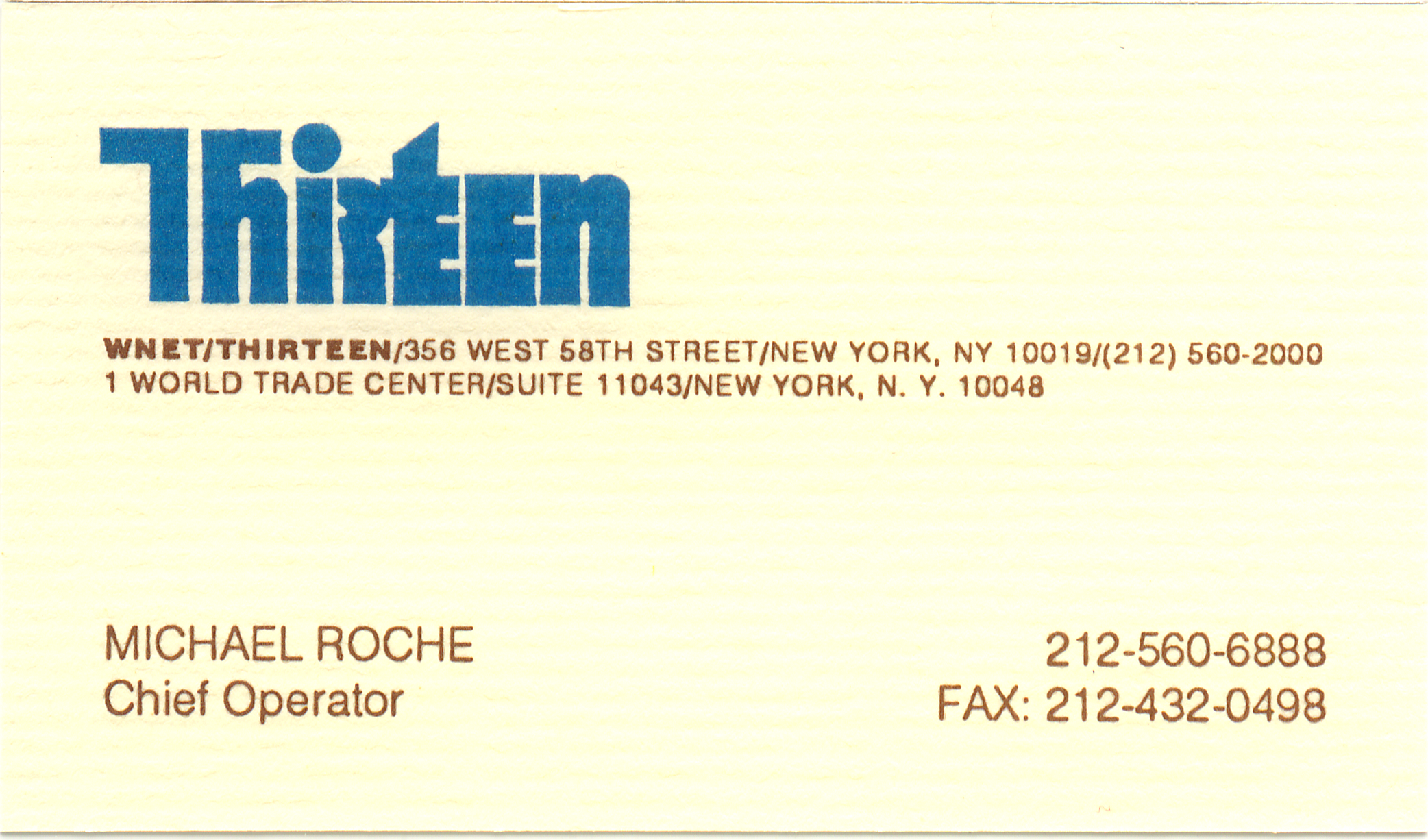
-
Pass the Torch (And Life Goes On)
One of my first duties at 13 was to clear out the remaining junk at the Empire State Building site. I remember a comment by Bud regarding the new transmitters (8916 ceramic tubes vs. the old glass tubes) - "how do you know they're working if you can't see them glowing?".
I fully understood his sentiment. He was the last of the old-timers from the Empire transmitter site to retire. On his final day, he handed me his key and ID then said 'it's all yours now kid' . . . . W O W. I never imagined, since I was that little kid watching the old DuMont, that I would have the torch passed to me from one of those guys, the guys that I wondered about all those years.
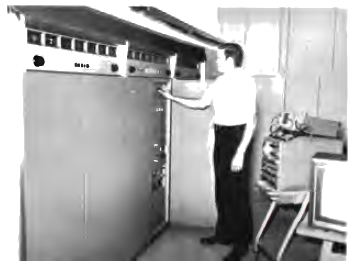
As I found myself the last man standing, I felt like the Lone Ranger without Tonto. I needed a partner to help handle the work load, the job involved way more than just the transmitter site at WTC. There was a microwave room uptown on 58th Street, the remote control computer (DATA GENERAL NOVA 2) in Master Control, phone lines, satellite uplink transmitter (VARIAN) and downlink receivers at the Western Union Earth Station in Vernon, NJ plus the microwave towers in between. Another duty of the RF Ranger was setting up the portable microwave transmitters for all the Live From Lincoln Center performances broadcast on PBS nationwide.
There was also a safety issue, two guys were required when working on anything over 48 volts. Action was taken immediately after I got zapped while working on the uplink transmitter. Without consulting me, a guy was hired, but it didn't work out. I was then asked to help find someone and submit resumes. Of course the first person to pop into my head was Rod (KA2KET).
He was a bit reluctant and unsure of his ability. I showed him the schematic of the transmitter output (RCA TT-25FH), without telling him what it was, and asked if he could describe it. No problemo, it was a tube output stage of an RF linear amplifier. BEAUTIFUL, now just imagine that the tube is bigger than a 6BQ5 with 8,000 volts on the plate. That convinced him, he allowed me to submit his resume and he was hired. I've come Full Circle now.
Rod and I once again built a 'Pirate' radio station, this time on the FM band from the top of the World Trade Center. Running about 3 Watts in stereo, we received a signal report from our friend Hugh (N2XBC) driving around Morristown, NJ that it was weak but audible. We left it on for a whole weekend unattended with a multi-CD machine playing Patsy Cline and The Ramones. I was the Monday morning early guy (3:00 AM off-air maintenance) and Rod usually strolled in after rush hour traffic. That Monday morning Rod came flying through the door, bright and early, yelling 'pull the plug - pull the plug'. As a Howard Stern fan, he heard a caller (Joey Ramone was a guest that morning) ask: 'hey Joey, when did you get your own radio station?' . . . that was the end of that.
Deciding to not put our Licenses in jeopardy, we turned our attention to a legitimate form of broadcasting - Amateur Television. We built a receiver and transmitter for the 432 MHz ATV band and explored that world for a while. Reception on almost any frequency was extremely difficult at the top of the World Trade Center (this was before Motorola cleaned up the RF mess on the roof). Even with several filters we couldn't pick up any ATV activity in the tri-state area. Having set up a 100 Watt TV transmitter, we left it on one weekend sending out a picture of Saul Slonim (W2PD) sitting in a chair. The signal was very good out to Nutley and for lack of a better antenna could not be received much further than that. Well wouldn't you know, we did it again. The entire Ham community was in an uproar, we wiped out a radius of about 15 miles. There were plenty of ATV stations around, it's just that we couldn't receive them. We apologized profusely and managed to make new friends. We eventually honed our reception skills for such an intermod ridden environment.
The WNET transmitter site was also the home to other radio interests. I made room for the Civil Air Patrol packet radio link for the U.S. Northeast Corridor (SysOp: Lt Col Gene R. Pfeiffer). We even squeezed into the racks the 220 MHz transmitter for Alex's (KQ2H) repeater system. This was connected to the CH13 standby antenna via a 3-1/8 inch to N-connector copper cone - even though it was polarized horizontal, it worked well.
I managed to do other things during the 1980's besides my dream job and my dream hobby. When the phone company was split up, several startup companies were formed, one being Teleport Communications in 1985. I worked with TCG as a freelance consultant from the start, at first designing and constructing the routing switcher system for the Earth Station on Staten Island. This was meant to handle TV feeds for broadcasters and businesses throughout the tri-state area, via fiber optics, allowing access to and from any satellite in the arc. Rod worked with me on this project, and I'll never forget the night we got stuck in the mud delivering some racks (the facility was still under construction, and the macadam wasn't finished yet). We persevered and completed the installation within the allotted time frame. I also worked on getting fiber run for long distance telephone networks and CLEC, this was considered the first non-telco interconnect.
"NO MOVING ZONE PLATE" - imagine that said with the dialect of a bad Japanese Sci-Fi film. We were in a meeting (led by Mark Schubin) with representatives of the company trying to sell the Codecs for converting analog TV to digital for the fiber. It must be understood that 'digital' television was a new technology back then (NR - the phone company's 'Network Radio' was still sending video analog over coax). While attempting to define the specs and parameters for acceptance of this new equipment, various test patterns were discussed including dynamic methods, not just the old Color Bars or Multiburst which were static. It was suggested by Mark to use the Moving Zone Plate, at which point one of the Japanese engineers jumped up, waiving his arms and exclaimed that phrase - twice. Rod thought this was the funniest thing, funnier than his phony phone calls. For years after, he would make me crack up by blurting this out.
Rod, being a genius musician/engineer (sort of like Frank Zappa), always practiced his first passion. I remember him sitting at his work bench one day, and in a quiet moment I hear what sounded like a 'sizzle-cymbal' playing the strip-tease beat. I looked over the top of some test equipment to see him, with hot soldering iron in hand, tapping the wet sponge. He always made me laugh.
He is also the reason I met and married Barbara! In 1988, I went to a club to see (and video tape) one of his bands. I really loved his versions of Rescue Me (Fontella Bass) and Kicks (Paul Revere). There was another band there that night with their support group. I exchanged glances across the stage with Barb and shortly thereafter, her friend comes over ( thinking I was eyeballing her ) to say hello to me. Well, I had to nip that in the bud, I immediately responded with "Hi, who's your friend?" . . . and the rest is history.
Rod has been such a huge part of my life for so many years.
A year before 9-11, I left WNET to become Mr Mom. Rod stayed on and sadly perished in the terrorist attack on September 11, 2001.
Dear Rod - I miss you, I love you, you will always be in my heart . . .

Rod on WVRM, Hazlet, NJ back in the 1980's (recorded over-the-air*).
* Special thanks to Frank Fezcko (KB2MCO) for the audio archive. -
The Last Paragraph
All in all, CB been berry, berry good to me . . . oobly - doobly - doo

